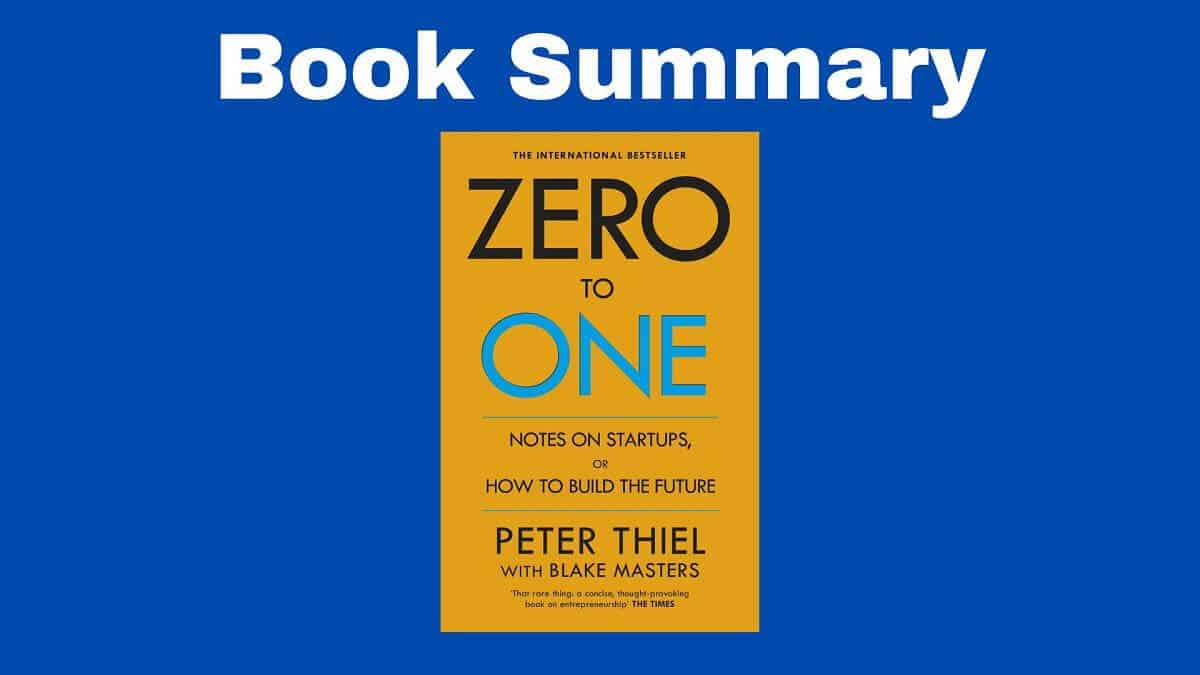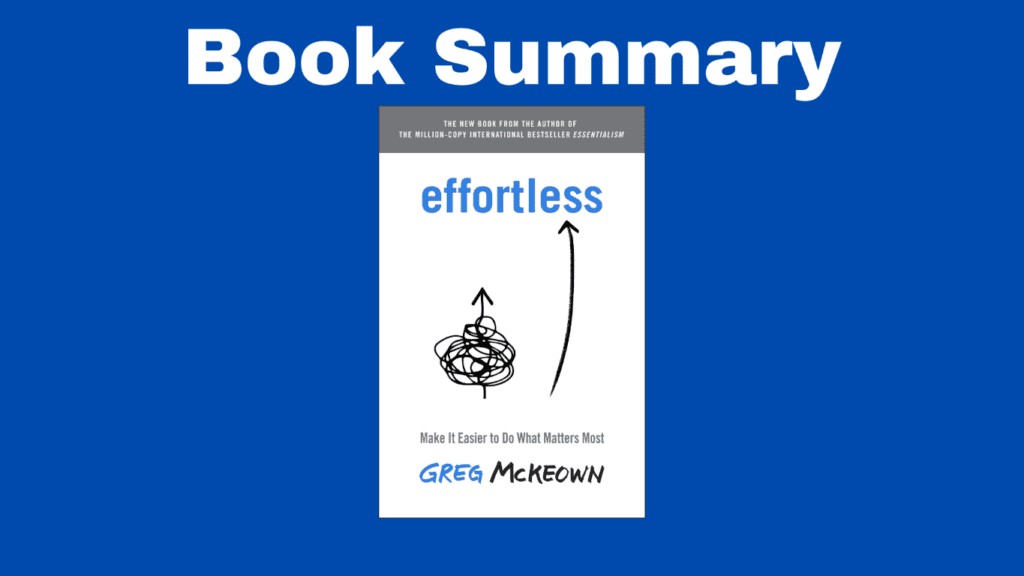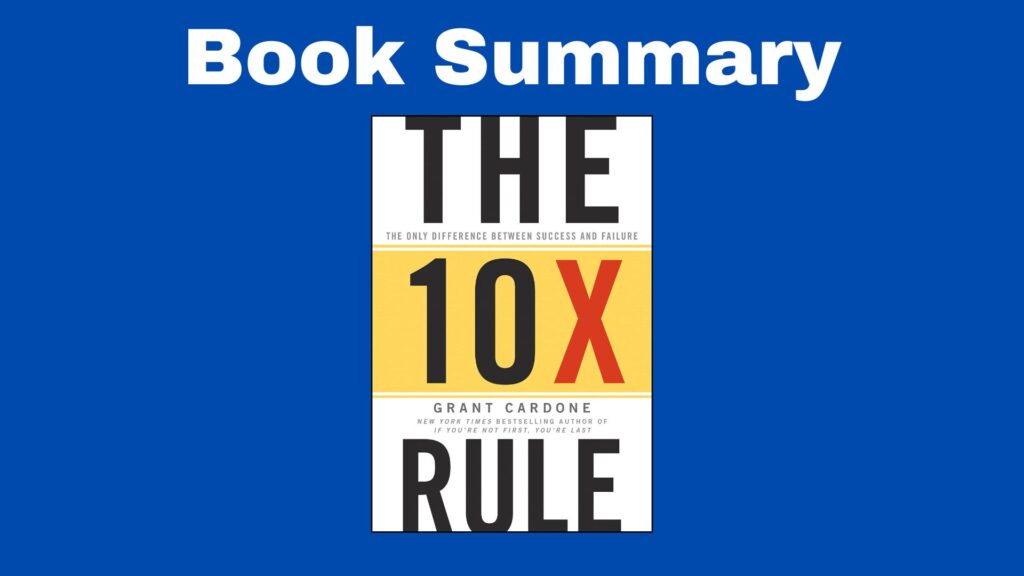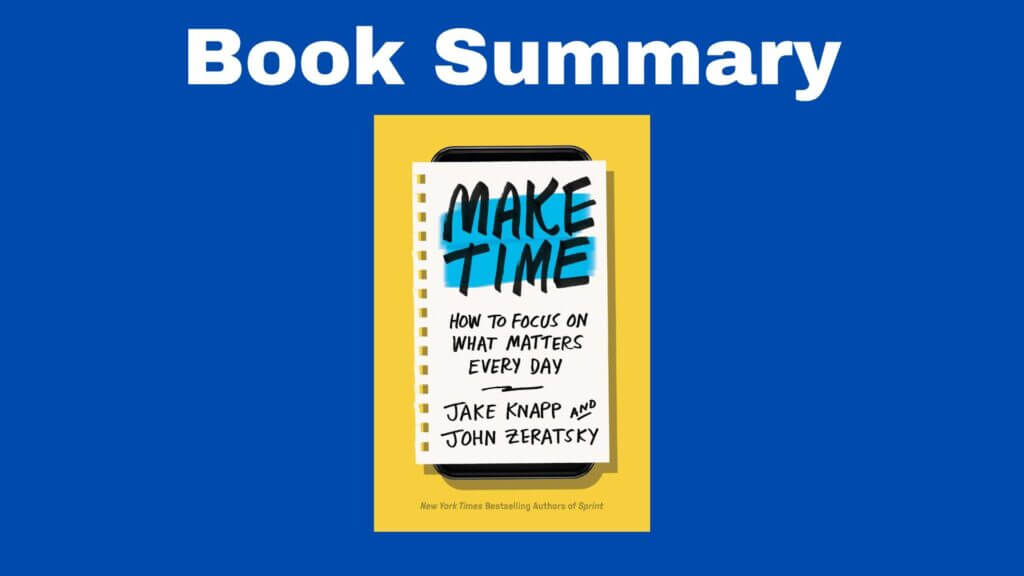The Book in Three Sentences
In this book summary of Zero to One, you’ll learn that there are new businesses and inventions to create. Before that can happen though, we must understand that we live in an era of technological stagnation, so we first must learn to think for ourselves. In other words, we must go from 0 to 1.
Zero to One Summary
Preface
To learn from innovative entrepreneurs (people like Bill Gates, Larry Page, or Mark Zuckerberg), you don’t have to copy them. Copying is easier, but it takes you from 1 to n. Making something new, on the other hand, takes you from 0 to 1. Creating something new requires companies to do more with less and the tool they need for that purpose is technology. Entrepreneurship doesn’t involve a formula to success because that formula doesn’t exist. There is a pattern though: successful people find value in unlikely places. In a way, success isn’t just about learning skills, it’s about learning skills and using them in the real world.
Chapter 1: The Challenge of the Future
The author introduces the contrarian question: “What important truth do very few people agree with you on?” This difficult question is related to the future. What makes the future important is that it’ll be unrecognizable from today. The future is the moment when society changes radically and it can happen a decade or a hundred years from now.
The future implies progress and it often comes in two forms. Horizontal or extensive progress involves copying (1 to n). Vertical or intensive progress involves doing new things (0 to 1). The former is easy because we already know what it is. The latter is harder because it’s about doing something no one has done before. An example of extensive progress is globalization, a model you can copy and apply to any country in the world. An example of intensive progress is technology. Since both modes of progress are different, they work independently from each other.
Although most people believe that globalization will define the future, Thiel believes technology is more important. Globalization without technology presents an unsustainable future due to the world’s limited resources. The biggest challenge today is to create technologies that lead to more peace and prosperity than the previous century. New technology often comes from startups, a small group of people whose mission is to improve the world. But before they get there, startups must question ideas and rethink businesses.
Chapter 2: Party Like It’s 1999
The contrarian question is difficult to answer. We may first have to think about the things that everybody agrees on. This is known as the contrarian truth and it refers to what’s behind a delusional popular belief. These conventional beliefs only look wrong in hindsight and to overcome them, we must first question everything we think we know. For example, we look back at the 90s as a prosperous and optimistic decade, but it isn’t random that it led to the dot-com bubble. Numerous events led to the crash, including a rise in unemployment and jobs flowing to Mexico. One area that was improving fast was the internet, but this euphoria around the internet didn’t last long. The dot-com crash taught entrepreneurs four lessons:
- Make incremental advantages: The only way to move forward safely is by taking small, incremental steps.
- Stay lean and flexible: Instead of having a plan (which is arrogant and inflexible), try things out, iterate, and experiment.
- Improve on the competition: to have a real business, improve products that already exist.
- Focus on products, not sales: Technology is about product development, not distribution. You shouldn’t need advertisements or salespeople to sell something.
Opposite ideas aren’t automatically true. What you can do instead is ask yourself: How much of what I know comes from faulty reactions to past mistakes? The most contrarian thing you can do isn’t to reject the most popular opinion or to put it simply, the most contrarian thing you can do is think for yourself.
Chapter 3: All Happy Companies Are Different
The best version of the contrarian question when it comes to business is: “What valuable company is nobody building?” Taking into account this question, you have to create value, as well as capture a fraction of that value. This explains why certain companies compete with each other to make small profits, such as airlines, while others compete with no one and make huge profits, such as Google. Google creates less value but captures more of it. In economy, two models explain the difference between airlines and Google: perfect competition and monopoly.
Perfect competition is when supply meets demand. All companies are perceived as being the same because their products are very similar. As a consequence, the price of their product is determined by the market. In the long run, your company makes a profit. Monopoly, on the other hand, describes a company that owns its market and can set the price it wants. In conclusion, to create and capture value, build a commodity business that’s unlike everything else.
One of the most common misconceptions is that most businesses seem alike. Monopolies want to be left in peace in order to make more profit. Entrepreneurs, on the other hand, describe their market as narrow so that they can dominate it. This is a mistake because you avoid asking yourself important questions related to your business. In other words, you convince yourself and others that your business is exceptional. To start a business, you shouldn’t just focus on small differentiating factors and you shouldn’t define your market as an intersection of different smaller ones. On the other side of the spectrum, monopolists describe their market as a combination of large markets.
If the world was static, monopolies would be evil. But our world is dynamic, so monopolies create new and better things all the time. Creative monopolies make the world a better place by giving more options to their customers. Successful businesses become monopolies because they solve a unique problem and by definition, they’re different. Failed companies are all the same in the sense that they can’t escape competition.
Chapter 4: The Ideology of Competition
Creative monopolies mean new products for everyone and profits for the people who made them. Competition means no profits and yet a lot of people defend it. Competition is an ideology and as such, it becomes a trap that’s hard to get away from. At first, Microsoft and Google didn’t have a reason to fight, but they became so obsessed with each other that they were constantly looking for an excuse to do so. In the end, war and rivalry are expensive. Some companies are so eager to win, that they forget to ask if the war they’re involved in is worth it in the first place.
Chapter 5: Last Mover Advantage
To become a monopoly, you have to escape competition. A monopoly is a great business, as long as it’s relevant in the future. Instead of focusing on durability (which is hard to measure), most entrepreneurs should focus on growth (which is easy to measure). One of the first questions entrepreneurs have to think about how likely it is that their business will be around a decade from now. This is something you can’t answer with just numbers on a spreadsheet.
A company that makes money for a long time has the following characteristics:
- Proprietary technology: This makes your product difficult or impossible to replicate. As a general rule, proprietary technology must be ten times better than the one from the closest competitor to be considered a monopoly. Anything less than that and your product will be hard to sell. The best way to do this is to create something new or to radically improve something that already exists.
- Network effects: This is when a product becomes more useful as more people adopt it. For example: social networks.
- Economies of scale: Monopolies become stronger the more they grow. Ideally, you’d be able to grow without having to spend money and by serving as many people as possible.
- Branding: To claim a monopoly, create a strong brand.
All of these parts are necessary to create a monopoly, but for them to work, you need to choose your market carefully. At first, you should start with a small market. Ideally, your target market has a small group of people who are served by no competitors. When you dominate this niche market, you need to expand to adjacent markets. As you expand, don’t disrupt and avoid competition.
“First mover advantage” refers to the person who enters a market first and captures its share before competitors even get started. This sounds good, but by definition, it implies that someone could come in last and replace you. To avoid this, start small, dominate that small niche, and expand having your endgame in mind.
Chapter 6: You Are Not a Lottery Ticket
Does success come from luck or skill? A lot of successful people will attribute their accomplishments to luck, but this simply isn’t the case. Similarly, we can ask ourselves if the future is about chance or design. There are two options, you can treat the future as something definite or as something uncertain. If you see the future as something definite, you should try to understand it and do your best to shape it. If you see the future as something indefinite, you should give up and let it unfold. This is living life without a plan and doing a lot of things but mastering none because the future is unknowable. A definite person, on the other hand, tries to determine what’s the best course of action and takes it. This usually involves mastering a singular skill.
Definite and indefinite people could either be optimists or pessimists. Optimists are looking forward to the future and pessimists fear it. By combining these possibilities, we get the following world views:
- Indefinite pessimism: This is observing a bleak future without knowing what to do about it. Indefinite pessimists think there’s an inevitable decline, but don’t know how to react to it, so they just wait.
- Definite pessimism: This is accepting the fact that the future is uncertain, but since it will be bad, you might as well prepare for it.
- Definite optimism: This is the belief that the future will be better than now, as long as you plan for it.
- Indefinite optimism: This is the idea that the future will improve. Since we don’t know when that will happen, making plans seems futile.
Indefinite thinking applies to finance, politics, philosophy, and life. But is indefinite optimism possible? After all, Americans aren’t saving and companies aren’t investing. In general, people don’t have solid plans for the future and this model seems unsustainable. Iteration without a plan isn’t the answer, but coming back to a definite future might be. The first step toward that involves rejecting the idea that you’re a lottery ticket.
Chapter 7: Follow the Money
Money leads to more money. The exponential growth of money should never be underestimated because compound interest is one of the most powerful forces in the world.
In the early stages of a company, venture capitalists try to make a profit. To this effect, they raise money and invest it in the most promising companies. When done right, they get a percentage of the returns. The venture fund makes money when the companies they invested in become more valuable, go public, or are bought by bigger companies. This process takes time, usually around ten years.
Most commonly, the company fails and venture capitalists lose their money. Venture returns follow a power law where few companies outperform the rest. Ideally, venture capitalists should focus on the companies that have the chance to be overwhelmingly successful. In venture capital, the best investment performs equally or better than all the other investments combined. Seeing the power law ahead of time is extremely hard. Mainly because most companies in the early stages look the same.
Chapter 8: Secrets
Ideas we now see as famous and ordinary were at some point unknown and secret. Over time, these ideas became universal truths that everyone has access to. When they stop being a secret, you won’t have a competitive edge by knowing about them. With this in mind, contrarian thinking makes sense as long as new secrets exist.
Most people believe that there are no secrets to uncover. If this were true, it would mean that no world-changing companies would ever be created again. Some believe that all of the hard problems have been solved and unless all technology and every institution disappears from the face of the earth and humanity has to start over, we won’t have to solve hard problems. What remain are easy problems and impossible problems which make most people unsatisfied or depressed. In this day and age, few things are unknown or unexplored.
Secrets scare people because we’re told from an early age to take things slowly and overachievers get nothing for their effort. Also, being wrong is scary, and uncovering secrets might lead to mistakes. Globalization makes the world “flat” and homogenous, so we think that if secrets were to exist, someone would have found them already. Not believing in secrets lets you see the world as if all the great questions have been answered already. This is accepting the world as it is without questioning anything. For companies, this means not inventing anything new and growing stagnant.
To find secrets, you first have to look for them. Also, you need to see them as something likely rather than impossible. There are secrets to find, but the only ones who will find them are those who are relentless in their pursuit.
Secrets can be divided into two: secrets of nature and secrets about people. Secrets of nature involve studying the physical world and secrets about people refer to things people don’t even know about themselves. Or hide from others. While secrets of nature sound more important, don’t underestimate secrets about people. To find secrets, go to places where nobody’s looking. When you find a secret, only reveal it to those you need to and no one else.
Chapter 9: Foundations
While all companies are unique to a certain extent, they all have to get a few things right to become great. A flawed foundation can’t be fixed and mistakes made early on are challenging to correct afterward.
The most important decision you make when you start is who you choose as your cofounder. Founders have to complement their skill sets, but they have to work well together too. Apart from a cofounder, you also need a team, so hiring the right people is important. You need to get along with other members of your team and for this purpose, you also need a structure that allows it. You can anticipate problems by knowing the following concepts:
- Ownership: Those who own the company (founders, employers, and investors)
- Possession: Those who run the company (managers and employers)
- Control: Those who take care of the company’s affairs (board of directors)
Most of the people who work in your company should do so full-time because otherwise, their values will be misaligned with those of your business. Compensate the people who work for you appropriately. Giving them equity is important because it incentivizes them to create value. This can be a problem if you don’t allocate equity properly though.
Chapter 10: The Mechanics of Mafia
The ideal company culture would have happy employees, there would be no need for formal business hours, the workspace would be open, there would be entertaining activities to do, and pets would be allowed. Perks sound great on paper, but for people to be happy at work, you need more than that. The people who work for your company should be excited about the problem you’re trying to solve. Ideally, every person should do just one thing because this reduces conflict.
Chapter 11: If You Build It, Will They Come?
Sales and distribution are important. While we romanticize the building part, selling it is important too. Will customers come after you’ve built it? Without sales, the answer is no.
Advertising works. Not in the sense that you’ll see an ad and you’ll buy a product right away. Advertising leaves subtle impressions that lead to eventual sales. Making sales looks easy from the outside, but this is one of the most challenging fields. The people who sell perform. Therefore, when it’s obvious, selling seems vulgar and insulting, but when it’s subtle, it’s persuasive and effective.
Despite what some people say, no product sells itself. The more expensive the product, the more money you have to spend to sell it. These are what the author calls complex sales and the CEO is often in charge of them. Personal sales, on the other hand, can be done by anyone. The problem is to establish a process that lets you get a wide audience.
Between personal sales and traditional advertising, there’s a dead zone. Here there’s no distribution channel to reach your audience, so no one might buy your product. Using a broad resource like television won’t capture your target audience and setting up a personal sales effort is impossible. As a consequence, small businesses will probably fail. Marketing and advertising are two of the most effective tools for cheap products with mass appeal. Companies use television, newspaper coupons, or eye-catching boxes.
Viral marketing happens when the core functionality of your product encourages people to invite others to become users. This is both fast and cheap because it creates a chain reaction that’s hard to stop. For this to work though, the process has to be frictionless. This is how Facebook and YouTube took off.
Chapter 12: Man and Machine
Technology is advancing at such a rapid pace that a lot of people think that it will replace them. The author believes that computers are a complement for people, not a replacement. While humans compete for jobs and resources, computers don’t care about either. Computers are just tools we can use, not rivals. Therefore, technology will help professionals do their jobs better, not replace them.
Chapter 13: Seeing Green
Clean technology was the next big thing at the start of the 21st century. In many cities, the air and water were polluted and global warming was causing devastation around the world. But this quest to clean the world didn’t work. Most cleantech companies failed because they ignored one or more of the seven questions of business.
- The engineering question: Can you make important technology rather than incremental upgrades? To succeed, you need more proprietary technology than the next substitute. Ideally, you should be 10x better than the competition.
- The timing question: Is it the right time to start a business? Not all markets move at the same pace, so to take over a market, you need realistic and definite plans.
- The monopoly question: Can you start with a big share of the market? When you enter a market with ruthless competition, you are less likely to survive. The bigger the market, the bigger the competition and the less attainable your goals will be.
- The people question: Do you have the right people? You need the right people on your team. Identify the things that make those people stand out and hire them.
- The distribution question: Can you deliver your product? Products are important, but you also need to get the product on people’s hands. The process needs to be as friction-free as possible.
- The durability question: Can you stay relevant decades into the future? The future is one of the hardest things you can do. But this is important to determine if your business has a chance to stay relevant. The failure to anticipate problems can ruin your company.
- The secret question: Can you identify hidden opportunities? You have to have reasons for success that others are unable to see.
Most cleantech companies failed because they were unable to address these questions.
Chapter 14: The Founder’s Paradox
Founders are weird people. They often have extreme traits and polarize others. Founders can be hated and attacked. But they are essential because they’re the only ones who push their companies so that those businesses can realize their full potential.
Conclusion: Stagnation or Singularity
What can we say about the distant future? Throughout history, people have identified the same pattern: an alternation between prosperity and decay. But will the prosperity we’re enjoying last? Will the future look just like the present? Or will the world collapse? But there’s another scenario: There can be a massive breakthrough that improves the future so that it’s unrecognizable from now. We can easily envision a future where new technologies change everything. This is called the singularity and to get there, we have to go from 0 to 1.
Further Reading
If you enjoyed this book summary of Zero to One, you might also like the following summaries:




